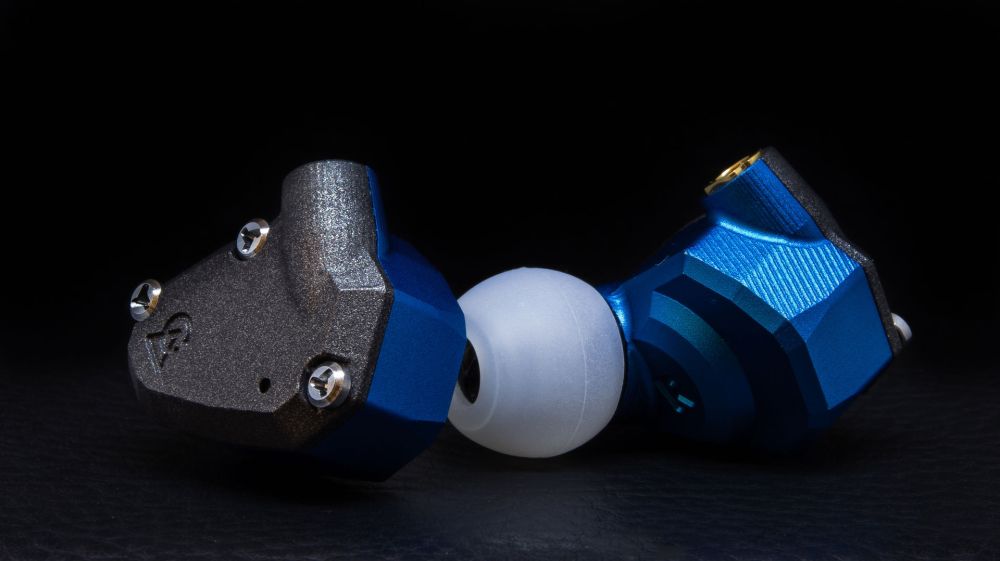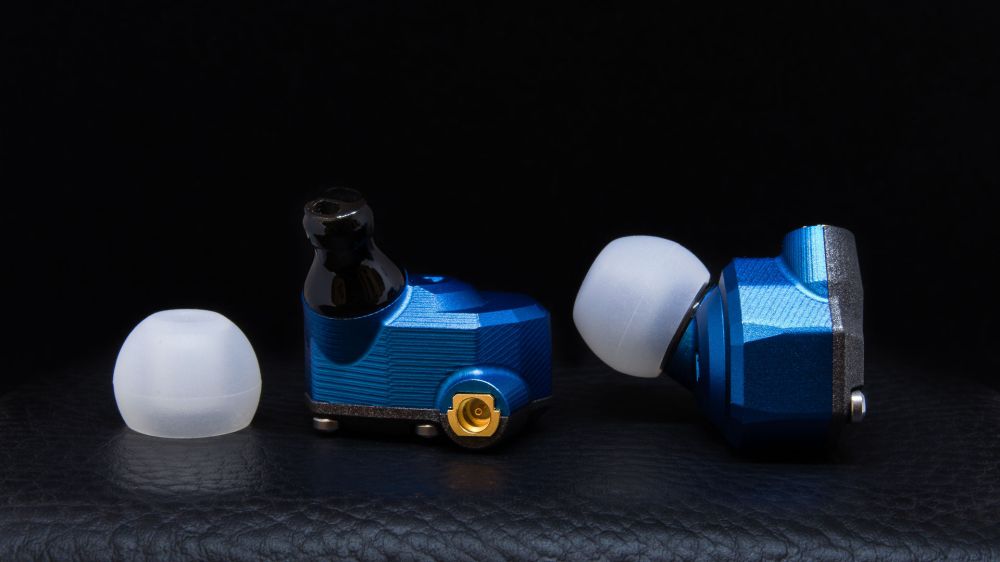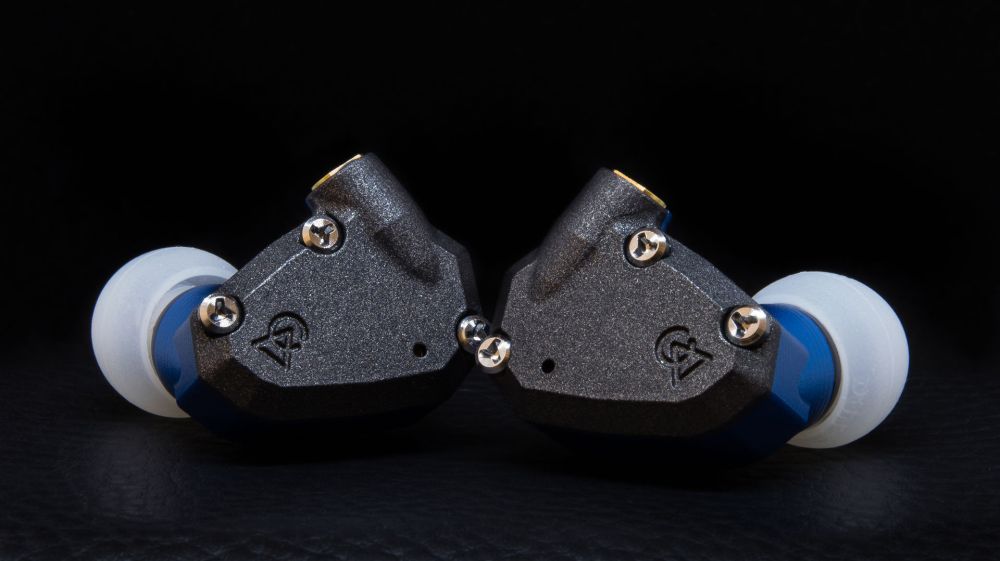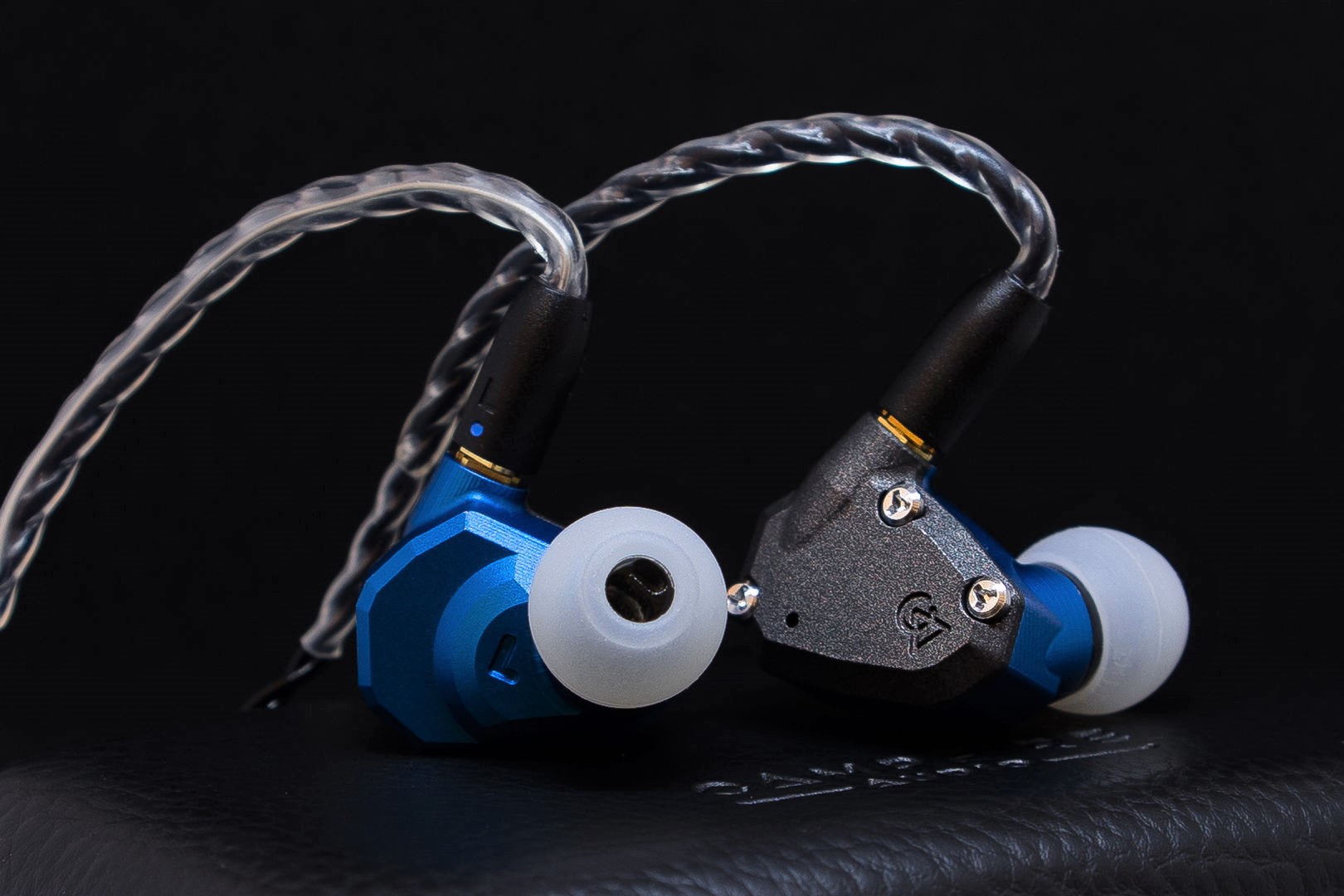Design –
The Polaris pursues a design that is more in line with Campfire’s armature based earphones than their dynamics featuring their larger, more angular housing shape. However, the Polaris assumes an intriguing two tone, two texture colour scheme that provides a very unique look and one that reflects the hybrid nature of its inner workings. While their aesthetic isn’t as subdued as Campfire’s previous designs, their choice of a rich blue is tasteful and the gunmetal Cerakote lid provides stunning contrast that looks a lot better in person than in photos and renders.

In terms of build, buyers get to relish in a delicious all aluminium housing machined in Portland, Oregon USA. As always, Campfire’s level of finish is class leading and no corners were cut when compared to their higher end models. After using the Jupiters almost daily for the past few months, I can personally vouch for the hard wearing qualities of Cerakote; those earphones, while mostly pampered, have been hastily pocketed and struck together with no visual repercussions.

The Polaris is no different, their gunmetal Cerakote lids remained flawless after my month of testing though their blue anodized housings did receive some trace chips here and there. I definitely advise winding the earphones up from the housings and storing with the Cerakote lids facing each other to keep them looking pristine. Perhaps my only gripe with their design are those silver screws which look quite incoherent, I feel that black screws would have fit the design of the earphones better.

Ergonomics are very similar to Campfire’s BA earphones given that the Polaris’ housings are mostly identical. However, the Polaris features a new nozzle design that does give them a slightly different fit than before. The nozzle is now plastic though it is incredibly solid, it’s longer than previous designs and smaller at its extremity permitting a deeper fit. I actually struggled a bit to find an appropriate ear tip though I eventually settled on the softer silicone tips included with the Dunu earphones. The Polaris also has a small vent on its outer face that does affect isolation, they still attenuate noise very well, better than the 64Audio earphones and as well as most sealed earphones, but they aren’t vacuum quiet like Campfire’s fully sealed models.

Furthermore, the vents make the Polaris very susceptible to wind noise, they aren’t unbearable like the Sennheiser ie800, but it is clearly noticeable when out and about. In addition, the Polaris suffers from some of the worst driver flex I’ve experienced though Ken has assured that it is within tolerances and I didn’t notice any sound degradation during my testing. Otherwise, the earphones are just as comfortable and stable as past models, staying put during a long distance run and forming no hotspots during extended wear despite their angular housings. These are ultimately minor quibbles that don’t impede normal use and are quite insignificant when compared to the comfort issues of the DK-3001 for instance.

At the top, the Polaris utilizes a removable MMCX cable with beryllium copper connectors. Campfire claim they’re magnitudes stronger than the usual brass variety, they’re very snappy with even tension on both sides and I experienced no intermittency during my testing. The Polaris is the first to use Campfire’s black Litz copper cable rather than the silver plated unit on their other earphones. Ergonomically, the cable is as excellent as before with the same memory wire system, low profile metal y-split and beefy yet case friendly right angle plug. I would have preferred pre-moulded guides as the memory wire is a bit fidgety and stubborn during shaping but I had no major comfort issues with the Polaris. The cable itself has a tighter braid than the silver Litz cable but resists tangles just as well. It’s also just as supple as the silver cable which is among the best I’ve come across. Due to the nature of the cable’s braid beneath the y-split, the cable is quite prone to becoming twisted though it does soak up a lot of microphonic noise in return.
Next Page: Sound




15 Responses
how this compare to the sennheiser ie 80s?
Hi Magnus,
I did briefly have the Dorado in the past but can only compare from memory, I have the Lyra II at the moment and will be sure to provide plenty of comparison in my full review. The Dorado is older but pursues a similar style of tuning at a higher level of performance. Its bass is just as full but more depth focused and very controlled. Mids don’t have the same issue as the Polaris, they are more linear and natural overall but also lack the clarity of the Polaris. Treble extends considerably further on the Dorado, the soundstage is larger and imaging is more accurate. I don’t think either are super forgiving of low-quality file types given their more resolving nature however, the Polaris may sound better for poorly mastered albums due to its clearer sound, the Dorado is more resolving yet but also quite thick.
Would be nice with a comparison between Polaris and Dorado. Especially regarding SQ, sound stage and how they handle poor recordings.
At some point would be interesting to see a universal single dynamic driver IEM shootout. Even though the trend is to how many BA drivers you can cram in one earpiece, it seems as though single dynamic driver IEMs are making a comeback proving it is the implementation and tuning of the driver rather than number of drivers that determines audio quality. Would like to know how the Vega, Lyra II, IE800, Dita Answer Truth & Dream and other higher end models etc compare to one another.
No problem Rich, I would very much like a review of the Xelento’s too but haven’t been able to contact Beyer! I have tried them and along with the Vega, I do think they perform at a higher level than the Polaris and Lyra II overall but whether they will be tonally suitable for you is another question entirely. You are right in that the Polaris isn’t really an upgrade to the Lyra II, it’s rather another similarly priced option with different tuning. I will be sure to pester Beyer more in the future, hopefully, I’ll be to make more concrete comparison then.
Thanks for your comments Ryan. Based on what you said i would consider the Polaris more of a sidegrade to the Lyra IIs vs an upgrade whereas the Vegas would be an upgrade. Have you tried the Beyerdynamic Xelento Remote? Would be interested to see a review of them.
Hi Clarence,
No worries, I’ve been really enjoying the Final E3000, it’s semi-open so isolation is mediocre at best but they have a very nice warm sound with a lot of detail and range for their price, I’ll have my full review up in a few days. The EX1 2nd Gen is also a solid semi-open option but it has a thinner sound that may not work so well for your tastes. If you have any other questions, feel free to send me a PM on Head-fi, my user is ryanjsoo.
Cheers,
Ryan.
Hey Ryan, I know that this question is not related to the review, but what IEM would you recommend for at most $50 with preferably a warm sound signature with the LEAST sound isolation? I want to walk in the streets with these IEMs and low sound isolation is important for safety for incoming vehicles. I know that I could go the earphone route, but I would prefer in-ears if possible. Thanks!
Hi Rich,
Thanks for your comments, I have tried the Lyra II but I can’t provide direct comparison, only some comments from memory. They have a similar low-end, perhaps the Lyra II has a bit more depth but decay is slower. The Polaris has more midrange clarity and is more detailed with a little more lower treble aggression where the Lyra II is smoother. The Lyra II will fit a lot better for those with smaller ears and has no wind noise issues. I think they’re in the same ballpark tonality wise with the Polaris being the more engaging counterpart.
Nice review Ryan. Have you ever tried CA’s other mid-priced offering the Lyra II? If so how does the Polaris compare? I own the Lyra IIs and love them. Great all day comfort and relaxed sound with strong dynamic driver bass. Can listen to them all day with no fatigue. Like the Polaris, the Lyra IIs aren’t turned for analytical listeners but tuned for folks like me who just want to pop in the earphones and enjoy their music. Also similar to the Polaris they scale well and sound good from portable sources but really sing when used with my Erzetich desktop headphone amp or my Aurender Flow. The Lyra IIs may also be one of the best values out there as well as I have seen them on Massdrop for $499. Would be interested to see a review of the Lyra IIs on the headphone list.
How compared with Noble Sage??
I can see what people are saying about the lower midrange on these earphones, they are definitely more temperamental than a lot of other earphones but I found they were more natural than not. I suppose it depends on your music preferences and source synergy, the stock ear tips also suck a lot.
Thanks for the thorough review, i wanted to like the Polaris but what it does to certain male vocals, how it adds a thin, shouts telephonic to them is imho unacceptable for any iems over, say, 100$. But that’s just me.
Sorry John,
Haven’t had a chance to hear Sony’s in-ears since the XBA earphones since they aren’t available in my region. They do certainly look interesting, I’ll see if I can organize a review in the future,
Ryan.
Have you ever heard the Sony Z5? Able to compare the hybrid sound between that and this?
Thanks!